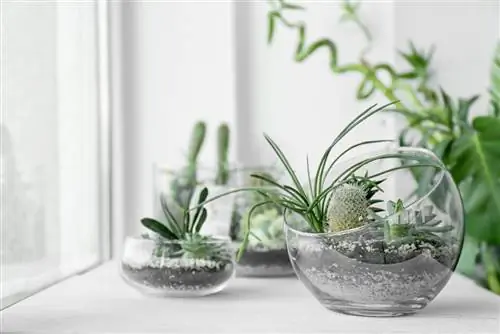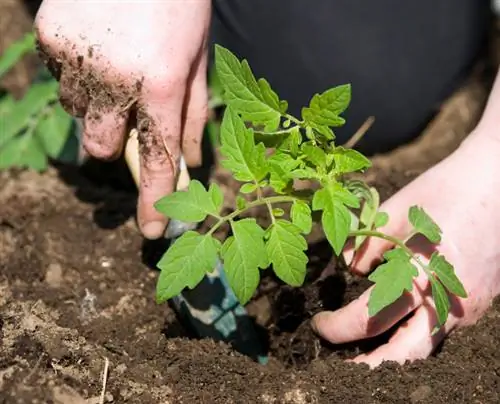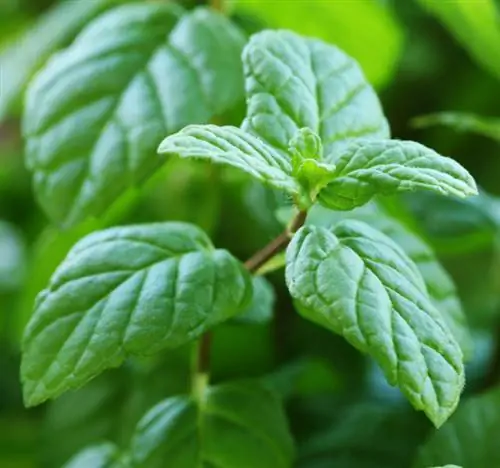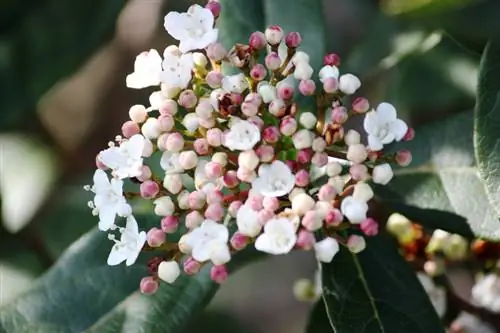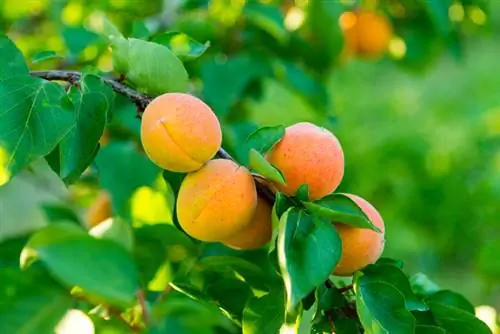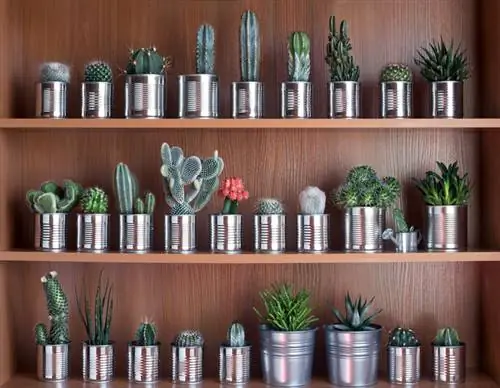- Author admin [email protected].
- Public 2024-01-05 20:48.
- Last modified 2025-01-23 11:22.
Houseplants come in an enormous variety of species. Thanks to our overview, you are sure to find an ornamental plant that suits your interior style. Thanks to our care tips, you will also have a lot of fun with your houseplant.
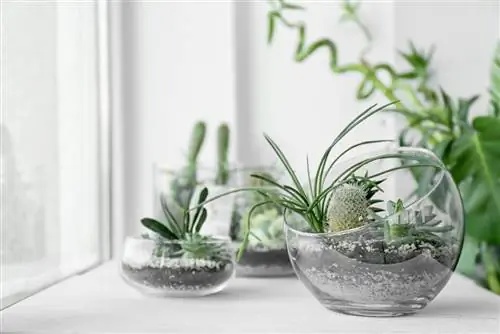
Which types of houseplants are popular and easy to care for?
Popular and easy-care houseplant species are Dracaena (Dragon Tree), Ficus, Cacti, Kentia Palms (Howea Forsteriana), Philodendron (Tree Friend) and Sanseviera (Bow Hemp). They are characterized by low water requirements, tolerance to different lighting conditions and some air-improving properties.
The most popular types of houseplants
Listing all types of houseplants would certainly go beyond the scope of this article. For this reason, we have put together a small selection of the most popular specimens for you.
Dracaena
- very easy to care for
- low water requirement
- tolerates dry locations
- also grows in dark locations
The Dracaena plant species is better known as the dragon tree. Both large and small varieties are commercially available. Due to its air-improving properties, the houseplant is the ideal office greenery. However, it is poisonous to pets.
Ficus
- large variety of varieties
- needs constant moisture
- high light requirement (leaves drop in the shade)
If you decide on a ficus, there are numerous varieties to choose from, including many colorful houseplants. However, in terms of care, the plant is comparatively demanding. For example, after cutting back the shoots, the plant bleeds heavily. Nevertheless, it also has many positive properties. Among other things, a ficus dampens the sound in the room. But this plant is also poisonous to pets.
Cacti
- easy care
- low water requirement
- also grows in dry air
- no demands on lighting conditions
The prickly plants are a classic on the windowsill, but also tolerate dark corners of the room. Among this type of houseplant you will encounter very unusual specimens with bizarre growth and beautiful flowers. However, repotting turns out to be a tedious job that requires you to be extremely careful.
Kentia Palms
- easy care
- various growth heights
- tolerates almost all lighting conditions
- does not tolerate waterlogging
- slow growth
Since Kentia palms, also called Howea Foresteriana, feel comfortable in almost any location, they are ideal for filling empty corners of rooms. Depending on your space, you can choose between plants of different sizes. However, you must adapt your watering behavior to the lighting conditions of the location. The darker the houseplant is, the less water it needs. In general, however, this type of houseplant requires a consistently moist substrate. Note: If you notice that your cactus is bleeding, you should stop the blood flow as quickly as possible to prevent scarring.
Philodendron
- easy care
- low light requirement
- disease resistant
- requires moist air
- toxic to pets
The Philodendron, often referred to as the tree friend, feels comfortable in the shade with moderate humidity. It rarely needs to be watered and is therefore suitable as an office plant. The large, shiny leaves of this type of houseplant differ visually from variety to variety. Sometimes they are uniformly green, sometimes yellow or white. Some species even have bizarre holes in their foliage. You are guaranteed to find a variety that suits you personally.
Sanseviera
- easy care
- low water requirement
- a bright, sunny location is optimal
- also tolerates shady locations
- slow growth
- toxic to pets
The arched hemp (Sanseviera) is also known as mother-in-law's tongue due to its growth habit. In contrast to the stereotypically unpopular relative, this type of houseplant is extremely easy to care for. Little water, hardly any demands on the location, what more could you want. In addition, the bow hemp has a long lifespan and comes with either plain-colored, green leaves or optionally with yellow stripes.

